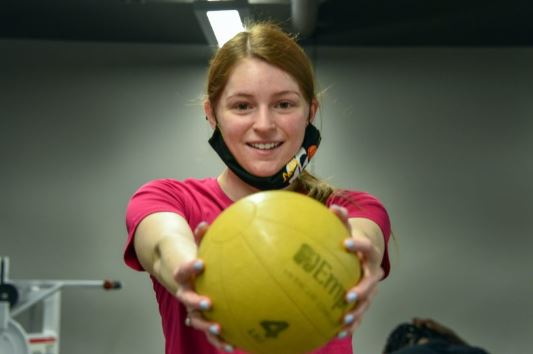Treatment Process
Consult
On your first day, you will come in for a consult with your doctor. A radiation oncology
nurse will take you into an exam room and check your vital signs (Blood Pressure,
Temperature, Pulse) and weight. The radiation oncologist will do a quick examination.
Once you have had a consultation with your respective doctor and he/she has given
you the necessary information about your specific cancer, the basic plan of action
on how your treatment will be approached, and discussed possible side-effects of your
radiation treatment, you will have a time set up to get a CT scan.
CT scan
The CT scan will give the treatment team a 3D rendering of the patient’s internal anatomy. This
scan will be used by our planning department and doctors to create your specialized
treatment plan. On the day of your appointment, a therapist will come and get you
and show you to the CT room. You will be assisted on the CT table by the therapist
and straightened to ensure that your body is aligned on the table. You will be placed
in the same position that you are to be treated in on a daily basis. This may include
positioning you on your stomach on a device called a bellyboard. After you are in position, you will be scanned once to ensure that your
internal anatomy is indeed aligned. When the therapist determines that you are aligned
properly you will be ready for the actual CT scan. The board number will be noted and lasers will be used for the therapist to mark crosshairs on your skin, and “BB’s” will be placed over these marks so that their location can be seen on the CT scan.
Next, the scan will be performed. The CT table will move through the scanner. At this
point you will not feel anything and nothing will actually touch you. The room is
mounted with cameras and audio equipment so that the therapist can see and hear you
at all times should you need anything. All you need to do at this point is to remain
as still and relaxed as much as possible. After the scan is complete, it will be sent
to Varian Eclipse Planning System for our dosimetrists and physicians to create your
individualized treatment plan. You will be assisted off the CT table and given an
appointment time for your first treatment, if one has already been determined, if
one has not, the clinic will call you with more information and an appointment time
when your plan has been completed.
Treatment Planning
The scanned information is sent to the dosimetry planning department as soon as it
is completed so that your site specific radiation therapy treatment plan can be made.
The planning process can take up to a week. When the team has completed your plan,
you will be assigned to a treatment room and given an initial “start” appointment.
Your Treatment
Your first appointment will take a little longer than the rest of your treatments.
You will be taken to a treatment room. Once in the room, you will get in the same position that you were
in during your CT scan. The table will be raised, and you will then be aligned to
the crosshairs that were marked on your skin. While trying to get you aligned, the
therapists will be moving you around. You should relax, “lay heavy”, and let the therapist
do all the moving. At this point, shifts will be made from these marks based on what
the dosimetry team has planned for you. Once shifts have been made, radiographic
images will be taken to ensure that you are aligned according to your plan and will
be checked by your oncology physician before any actual radiation treatment is administered.
It should be noted that films taken in the treatment room are used for set up and
localizing specific anatomy and do not show a progression or digression of your disease.
Once these images are approved by the physician, your skin will be remarked and you
will then receive your first treatment. The machine will rotate to different angles
based on your treatment plan. During your treatment, you will not feel the radiation,
however, you will hear the machine buzzing.
Tattooing
After completing your first treatment, permanent marks, or tattoos, will be made on
your skin. This involves placing a drop of ink on the skin and using a tiny lancet to make the marks. These tiny permanent marks allow the Radiation Therapists to ensure consistency
in your daily set-up. They also allow you, the patient, the freedom to shower or bathe
without the worry of maintaining ink marks and tape on your skin.
Photograph
After the permanent marks have been made, a photograph of your treatment set up will
be taken for the clinic’s records. This is to ensure that your treatment set up will
be consistent should a different therapist need to treat you at a later date.
Scheduling
Since this will be the room where you receive your daily treatments, you will discuss
a daily treatment time with your radiation therapist. Available time slots will vary
depending on your treatment room’s schedule. The decided treatment time will be consistent
throughout your treatment regimen. Treatments are given Monday through Friday- you
will not have to come for treatment on Saturday or Sunday.
Weekly Follow-up
After your first week of treatment, every Monday you will visit with a physician.
This is a time when you can talk to the doctor about any concerns or side-effects
you may be experiencing.


